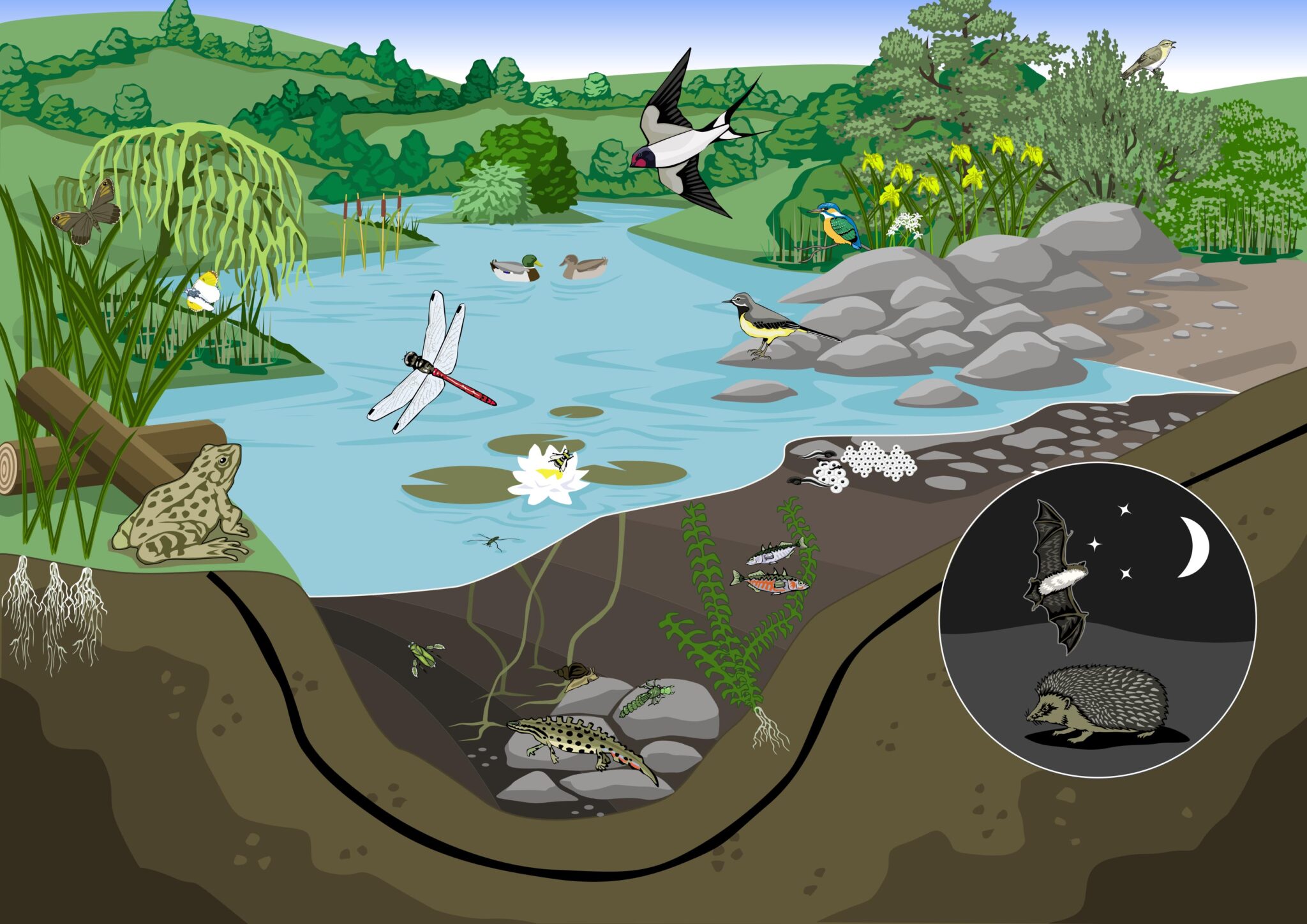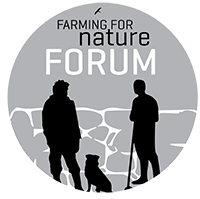Wetlands, ponds & waterways
Protecting wetlands and waterways is a great way to encourage and support biodiversity on your farm. Healthy wetlands and waterways provide key habitats for many plants and animals, help to store carbon, store and filter water, mitigate against the effects of droughts and floods and enhance the natural beauty of the landscape.
Actions on the Farm
CREATING BUFFER ZONES
Pollution from farming can damage wetlands. It is vital to stop run-off, including fertilisers, slurry, pesticides, milk, silage effluent or herbicides, from reaching nearby water bodies.
- To diminish the likelihood of pollution entering the water, allow a buffer zone of wetland vegetation to grow by the side of rivers, streams and ditches. This can easily be achieved by fencing these areas off from grazers.
- Buffer zones of at least three metres should be used for rivers and two metres for streams and ditches. However, the larger the buffer strip the more effective it will be at preventing pollution – so create bigger buffers if you have the space!
- In the first summer after establishment, cut buffer strips when the grasses reach 10cm in height to encourage tussocks to form. After the first year, cut different sections on a three-year rotation. This will ensure there are uncut sections left for wildlife each year.
- These buffers will provide a habitat for many beneficial insects and nesting sites for birds.
- Fence off land adjacent to ponds; allow wetland plants to colonise the area naturally. Ponds should have a buffer of at least two metres from pasture and ideally up to ten metres from cropland.
Managing your Riparian Zone for Nature
This educational video outlines different types of riparian zones that can may occur on your farm: 1. A grassland riparian zone found alongside a linear pond 2. A woodland riparian zone located beside a river 3. A woodland riparian zone located in an area of streams/wet ground The video highlights how Tipperary-based Farming for Nature Ambassador Michael Hickey manages the riparian zones on his farm and the benefits that his type of management creates for nature, for his farm and for him and his family.
PONDS
- The ideal location for a new pond is in an open, sunny, grassland area away from any water pollution threats and near to other natural habitats.
- In larger ponds, some shade can benefit fish. To prevent them casting too much shade, plant trees on the north side of the pond.
- If creating a new pond, do not introduce fish; they eat frog eggs and insect larvae, limiting the pond’s diversity. Be patient, the pond will be colonised naturally over time!
- If you wish to reduce dominant vegetation such as scrub or bulrush (reed mace) do so in small segments on rotation in late autumn/early winter. Minimise pond disturbance as much as possible; frogs, newts and insects may be hibernating in the muddy pond bottom.
- An irregular or kidney-shaped pond offers more benefits to wildlife as there are more areas for micro-habitats along its curving edges.
- A pond with shallowly sloping edges allows wildlife such as hedgehogs to escape if they fall in – so add at least one shallow sloped side to your pond.
- Having a varied depth with one deep section and many shallower edges creates a diversity of habitats for pond vegetation and other aquatic species.
- Any excavation work to alter the pond shape should be done in autumn and in sections over a few years to minimise disturbance.
- Siltation occurs when too much silt builds up and chokes out aquatic vegetation. Excess silt can be removed from ponds between September and November. To minimise disturbance, this should be done in small sections over a 3-4-year rotation.
- Try and minimise the use of heavy machinery in winter as this can compact the soil around your pond.
For more information on constructing or maintaining (and enhancing biodiversity in) ponds or small lakes, see our How to Build a Pond Guide
RIVERS, STREAMS, DRAINAGE DITCHES
- Keeping small areas of shade from trees or other plants is important to provide cooler areas for fish and other aquatic animals. However, avoid too much shade as this prevents light from reaching aquatic plants.
- As with ponds, only allow taller plants to grow on the northern banks of your river – this will allow light to reach the river.
- Bankside vegetation stabilises riverbanks and helps prevent erosion. If possible, leave these areas undisturbed to allow plants to grow there.
- If management is needed, it is best done in the autumn or winter on a rotational basis. Managing different sections of riverbanks on rotation means there will always be some undisturbed sections for wildlife.
WATCH OUT FOR INVASIVE SPECIES
Invasive species can find their way into your watercourse or pond over time. It is important to identify what species are there in order to know what the best method is for their removal. There are links to a variety of resources on identifying and preventing the spread of these species in our useful links here.
See our Best Practice Guidelines on Watercourse Management here
For more information on how to farm for nature, search by
SECTOR HABITAT SEASON FAQS
FURTHER RESOURCES EMAIL US ANY SUGGESTIONS


